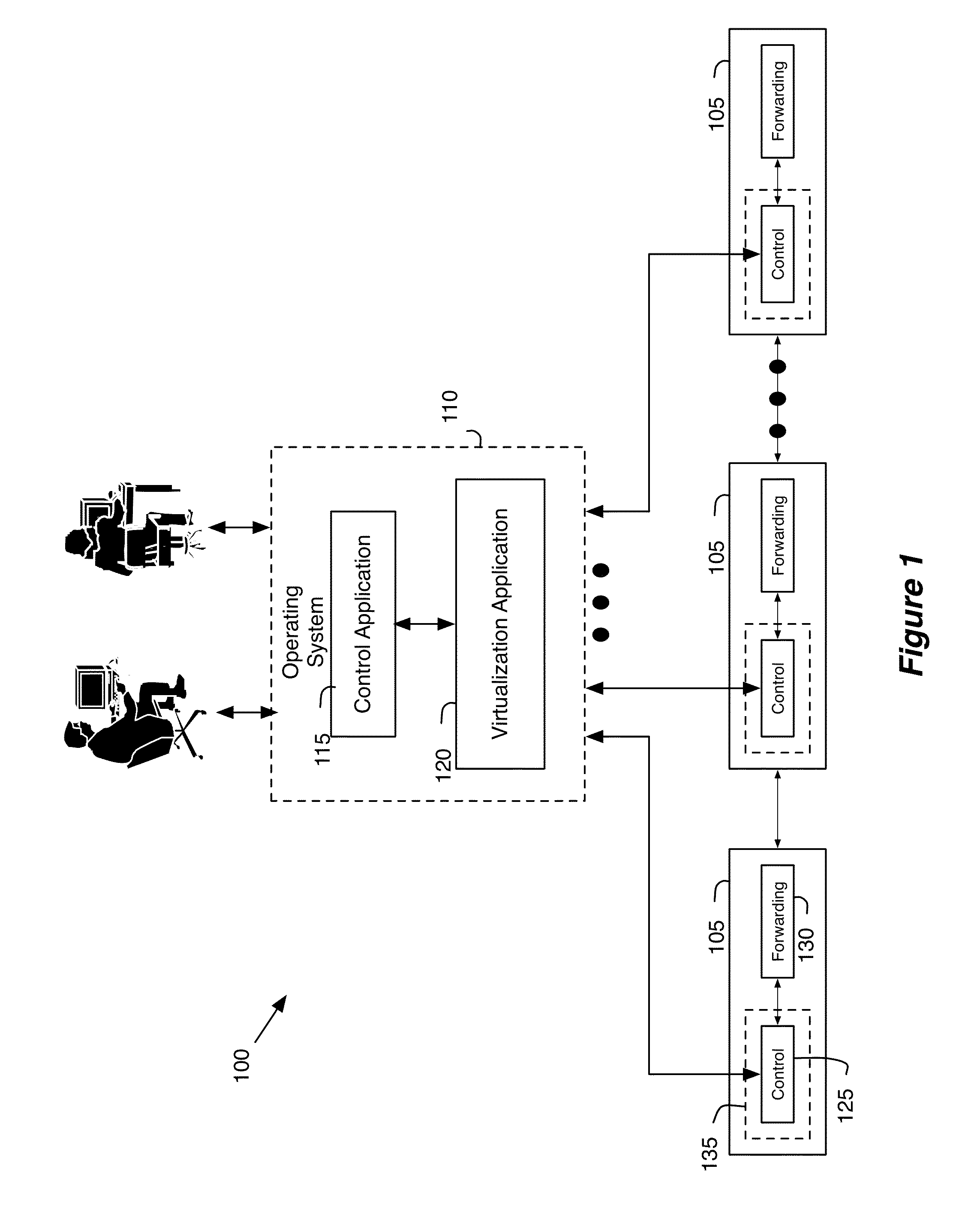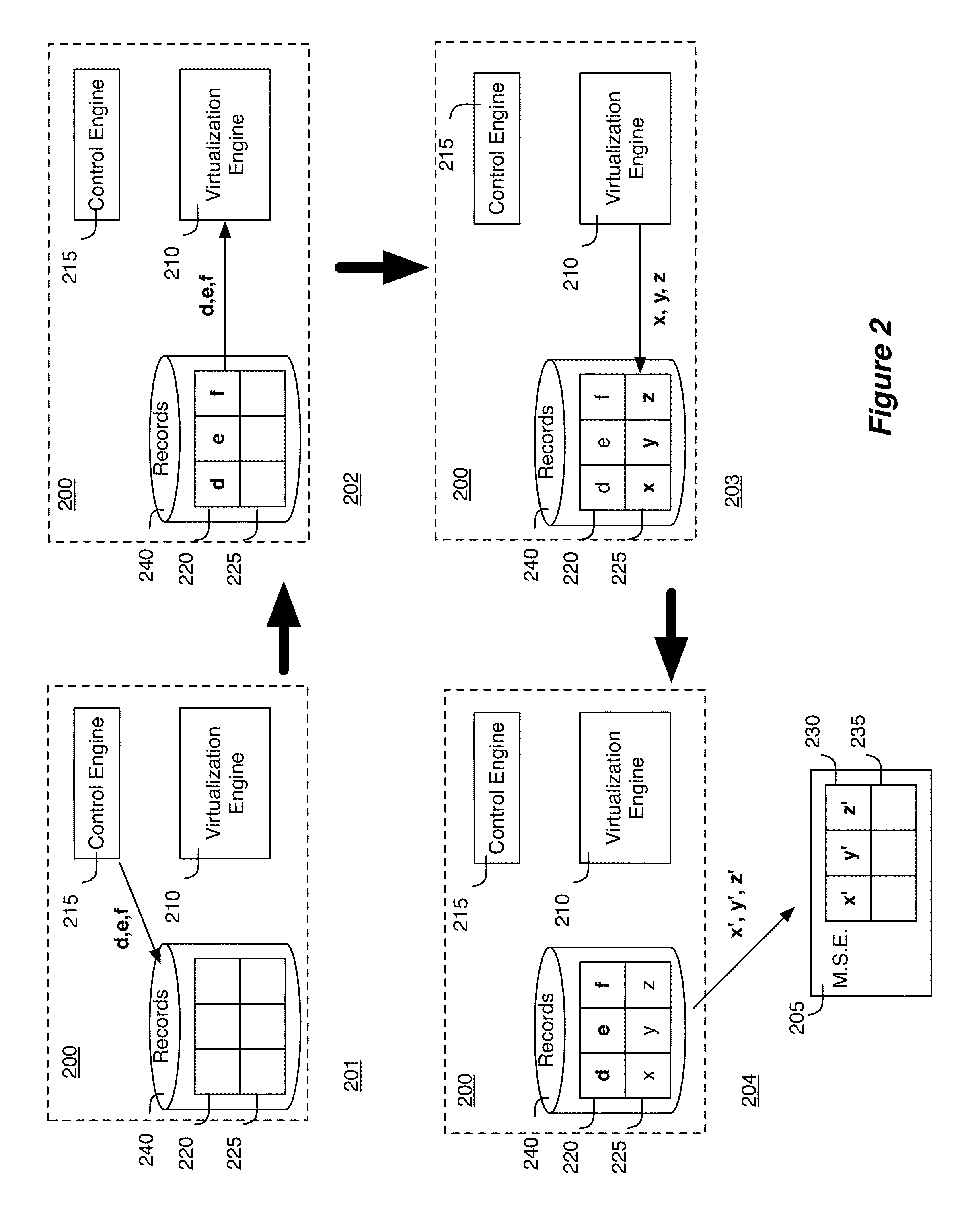Pull-based state dissemination between managed forwarding elements
a forwarding element and state-based technology, applied in the field of pull-based state-based dissemination, can solve the problems of increasing processing difficulty, l2 domains cannot scale to large sizes, and at least one of the others are hampering, so as to avoid the overhead of publishing and overhead cost
- Summary
- Abstract
- Description
- Claims
- Application Information
AI Technical Summary
Benefits of technology
Problems solved by technology
Method used
Image
Examples
example use cases
[0692]H. Example Use Cases
[0693]1. API
[0694]As mentioned above, the inputs defining LDP sets in the form of API calls are sent to an input translation controller supporting the API. The network control system of some embodiments renders the API updates atomic. That is, a configuration change migrates the system from the old state to the new state in atomic manner. Specifically, after receiving an API call, the API receiving code in the system updates the state for an nLog engine and after feeding all the updates in, the API receiving code in the system waits for a fixedpoint (to let the computation converge) and signals the transaction to be ended by committing the changes for the nLog. After this, the forwarding state updates will be sent downwards to the controllers below in the cluster hierarchy, or towards the switching elements—all in a single transactional update. The update will be applied in a transactional manner by the receiving element.
[0695]In some embodiments, the API u...
PUM
 Login to View More
Login to View More Abstract
Description
Claims
Application Information
 Login to View More
Login to View More - R&D
- Intellectual Property
- Life Sciences
- Materials
- Tech Scout
- Unparalleled Data Quality
- Higher Quality Content
- 60% Fewer Hallucinations
Browse by: Latest US Patents, China's latest patents, Technical Efficacy Thesaurus, Application Domain, Technology Topic, Popular Technical Reports.
© 2025 PatSnap. All rights reserved.Legal|Privacy policy|Modern Slavery Act Transparency Statement|Sitemap|About US| Contact US: help@patsnap.com



